Biohabitats Projects, Places & People
By Amy Nelson
Projects
Hassalo On Eighth: LEED Homes Award Project of the Year
Hassalo on Eighth is a vibrant, four-block, sustainable urban development in Portland’s Lloyd EcoDistrict. As of two weeks ago, it is also the U.S. Green Building Council’s 2017 LEED Homes Award Project of the Year! Hassalo on Eighth boasts the highest level of certification in renewable, clean energy development, green roofs, a bike hub, access to mass transportation, and numerous other eco-friendly technologies and amenities. It is also one of the first urban neighborhoods to treat and recycle its wastewater on site through NORM, a system designed by Biohabitats. Hassalo on Eighth was developed by American Assets Trust, designed by GBD Architects and constructed by Turner Construction. Our other project partners include Glumac, PLACE, Harper Houf Peterson Righellis Inc., and KPFF Consulting Engineers. For details about this project contact Pete Muñoz.
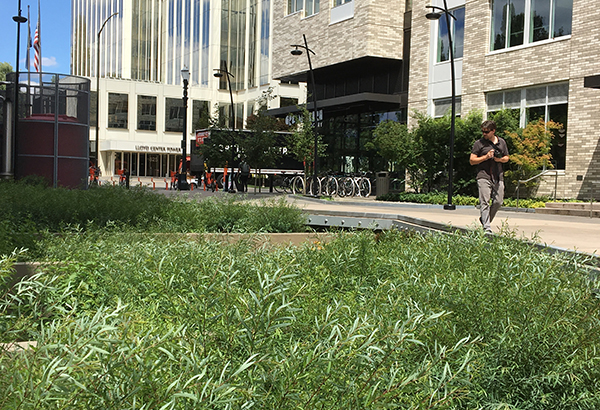
Barrier Island Resiliency Planning Project Earns ASLA Award of Excellence
We are pleased to share that the Galveston Island State Park Master Plan, completed under the leadership of Studio Outside in 2011, has been awarded an ASLA Professional Award for 2017: the Award of Excellence in Analysis and Planning. Biohabitats is proud to have worked on this landmark project that put ecological processes, climate change, sea level rise, and sensitive habitats at the forefront of the planning process for a beloved state park on the shores of the Gulf of Mexico. Our role was focused on modeling impacts of sea level rise on this sensitive barrier island landscape, considering erosion, sedimentation and habitat migration for sensitive species including the Kemps Ridley Turtle and rare habitats like the Coastal Strand Prairie. In light of the increasingly intense storms we have witnessed recently, it is heartening to know that there are opportunities to apply these concepts of resiliency and ecological function in plans for more sustainable and accessible parks and open space. We will be joining Studio Outside at the ASLA Annual Meeting in Los Angeles in October to accept this award. We also look forward to discussing this project, and other Gulf Coast park projects that focus on ecological resilience, at the upcoming National Recreation and Parks annual conference on Sept 28th in New Orleans, LA. For more information contact Ed Morgereth.

Urban Ecology Frames Atlanta’s Future
Biohabitats is about to undertake one of the most comprehensive urban ecology planning studies in the US. Atlanta, like all great cities, is a complex system brimming with cultural and economic activity, much like what we would find in a study of natural habitats and the species interacting within them. That is no coincidence. We often think of cities as steel and concrete, roads and parking lots, skyscrapers and apartments. But underlying all of that grey infrastructure is a landscape that was initially sculpted by rivers and streams, covered by forests and grasslands, and teeming with an abundance of wildlife. In fact, Atlanta is often called “the city in a forest” based on its development patterns and its uncommon abundance of tree canopy within the city limits. Contemplating forecasted population growth, Atlanta Mayor Kasim Reed, along with Planning Commissioner Tim Keane and urban planner and Beltline visionary Ryan Gravel, developed Atlanta City Design, a community inclusive effort to envision the city in the next 20+ years. The vision called for a plan that is “For People, For Nature, and For People in Nature.” In support of Atlanta City Design, the Department of City Planning selected Biohabitats to lead an interdisciplinary team in developing an Urban Ecology Framework for the city.

Many cities like Atlanta are struggling to address a multitude of environmental and social challenges that impact human health and well-being, including air, water, and soil pollution; access to green space and quality foods; and major storms and climatic shifts. Sustainability plans begin to chip away at these issues, but they are often divorced from the underlying causes that gave rise to many of these issues in the first place: the urban form. It makes sense, then, that a good urban plan is grounded in a framework that reestablishes and fully integrates ecological processes into the heart of the city’s cultural and economic fabric. A strong Urban Ecology Framework in Atlanta will set the stage for a livable future that is not just based on sustainability, but on regeneration–the process of integrating living systems with human aspirations. The Urban Ecology Framework will provide the backbone for ensuring a more resilient, vibrant, and healthy city, and we look forward to keeping you posted as this exciting work progresses! For more information, contact Jennifer Dowdell.
Humans among species returning to NYC’s Freshkills Park
Not long ago, the idea to create a public eco-park on the site of one of the world’s largest garbage dumps may have seemed preposterous. Not so today. Thanks to the foresight and careful planning of the New York City Department of Parks & Recreation, the transformation of the Fresh Kills Landfill into Freshkills Park is well underway. Five years ago, using a living shoreline approach, we helped the City restore a wetland on the outer edges of the North Park section of Freshkills Park. Once eroding and dominated by the invasive plant, Phragmites, the wetland is now a healthy, biodiverse ecosystem which helps filter water and provides storm protection. Wildlife is returning, as evidenced by turtle nests and birds hunting for food and nesting within the site.
Soon, another species will enjoy regular access to the North Park area of Freskhills Park: humans. Construction of the first major section of the park to be open to the public has officially commenced. Slated to open in 2020, the 40-acre North Park natural area will include multi-use pathways, a large picnic lawn, a seed farm, a composting comfort station and a bicycle repair station. One of the most exciting features to be built as part of North Park will be an overlook deck, which will provide bird watching opportunities and views of the William T. Davis Wildlife Refuge and the restored North Park wetland. For more information, contact Terry Doss.
Baltimore’s Green Street Academy Getting Greener
When it was founded in 2010, Baltimore’s Green Street Academy (GSA) was envisioned as a “new kind of school” that would prepare middle and high school students in Baltimore City for college and careers in the 21st century economy. To prepare students for a world rapidly adapting to and relying upon technology and sustainability practices, the school offers many academic pathways toward fields such as advanced technology, conservation and urban agriculture, design, and construction management. With a solar panel-covered parking lot, hoop houses in which students grow crops, and an indoor fresh and salt water fish farm, GSA clearly walks the talk of their sustainability ambitions.
After teaming with Blue Water Baltimore to win a grant from the National Wildlife Federation, GSA reached out to Biohabitats for help in designing stormwater management practices on campus that could not only improve the quality of water flowing into a neighboring creek, but also serve as experiential educational tools. Working with GSA students (including our summer interns, Cameryn and Marcel), we created detailed designs for three features: a micro-bioretention area (aka rain garden) to retain and treat runoff from the parking lot, a raised planter to treat rooftop runoff, and a pollinator garden to beautify and enhance wildlife habitat in the school’s urban setting. For more information, contact Ted Brown.
Natural Riparian Preserve in New Mexico
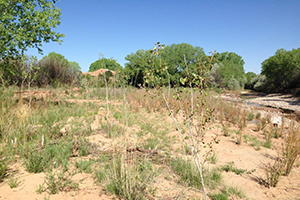 Galisteo Creek flows out of the southern Sangre de Cristo Mountains in central New Mexico. On its way to its confluence with the Rio Grande it passes through the village of Galisteo. In the late 19th century, the watershed saw a major increase in grazing by cattle, sheep, and horses, which resulted in major changes to vegetation and led to the formation of arroyos and gullies over wide areas. We’re thrilled to be helping the non-profit Galisteo Community Association in its efforts to create a publicly accessible natural riparian preserve along a one-mile reach of the creek that passes through the village. In 2015, as part of the initial phase of the project, we surveyed and mapped vegetation communities, conducted a fluvial geomorphic assessment of the reach, and prepared a technical drainage assessment to allow permitting by Santa Fe County. When the GCA secured funding from the State this spring to continue the restoration, we sprang to action. This phase of the project involved removing invasive species, restoring sections of channel that had been impacted by incision and bank erosion, and breaching an earthen berm which had adversely affected adjacent wetlands. Biohabitats prepared engineering designs for the channel work and breaching the old berm. The designed structures include regionally appropriate bioengineered post vanes and post and wattle grade controls. The design also calls for re-vegetation of all disturbed areas with native grasses, willows and cottonwoods. For more information, contact Rob Von Rohr.
Galisteo Creek flows out of the southern Sangre de Cristo Mountains in central New Mexico. On its way to its confluence with the Rio Grande it passes through the village of Galisteo. In the late 19th century, the watershed saw a major increase in grazing by cattle, sheep, and horses, which resulted in major changes to vegetation and led to the formation of arroyos and gullies over wide areas. We’re thrilled to be helping the non-profit Galisteo Community Association in its efforts to create a publicly accessible natural riparian preserve along a one-mile reach of the creek that passes through the village. In 2015, as part of the initial phase of the project, we surveyed and mapped vegetation communities, conducted a fluvial geomorphic assessment of the reach, and prepared a technical drainage assessment to allow permitting by Santa Fe County. When the GCA secured funding from the State this spring to continue the restoration, we sprang to action. This phase of the project involved removing invasive species, restoring sections of channel that had been impacted by incision and bank erosion, and breaching an earthen berm which had adversely affected adjacent wetlands. Biohabitats prepared engineering designs for the channel work and breaching the old berm. The designed structures include regionally appropriate bioengineered post vanes and post and wattle grade controls. The design also calls for re-vegetation of all disturbed areas with native grasses, willows and cottonwoods. For more information, contact Rob Von Rohr.
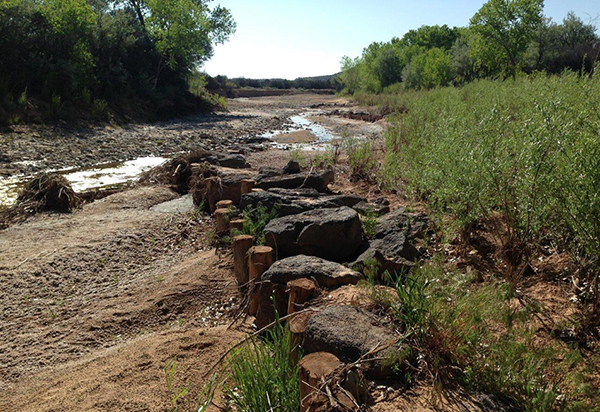
Enhancing Ecology in one of America’s Greatest Urban Parks
Over 500 acres larger than Central Park, Forest Park in St. Louis, MO is one of America’s great urban parks. Dedicated in 1876, Forest Park was host to the 1904 World’s Fair and the first Olympics held in the United States. Its 1,300 acres encompass five major cultural institutions, over 45,000 trees, and a variety of urban ecosystems. Recognizing the important role that healthy and vibrant ecological processes play in making urban parks so successful, Forest Park Forever has selected Biohabitats to prepare a Natural Resources Management Plan for this iconic civic space. Over the next year, Biohabitats will be preparing a long-range plan for the restoration and ongoing management of the Park’s natural resources, especially the natural areas of the Park and those set aside for conservation. Sensitive to the guiding principles and recommendations of the Forest Park Master Plan, the Natural Resources Management Plan will propose specific alternatives and improvement projects to enhance flora and fauna diversity and ecological sustainability of the Park. Contact Ed Morgereth for more information.
Oregon’s Sandy River is Jammin’ With Habitat
From its origin as snowmelt from the western slopes of Mount Hood, the Sandy River flows 56 miles before emptying into the Columbia River. The river and its tributaries support several anadromous species, including threatened salmon and steelhead. Over the last several decades, human impacts such as a former hydroelectric dam and road construction have contributed to a significant decline in salmon and steelhead runs. Working with the Portland Water Bureau, Metro, and the Oregon Parks and Recreation Department, Biohabitats is helping to restore key habitat for threatened salmon and steelhead at Oxbow Park and the Dabney Recreation area along the Sandy River.
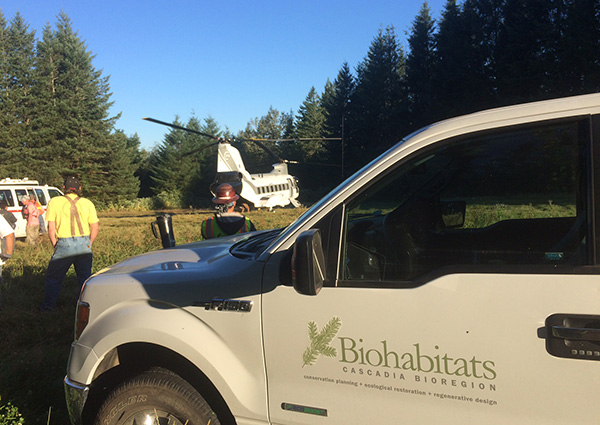
After excavating and reactivating an historic side channel at Oxbow Park, we installed (with assistance of a heavy lift helicopter!) a large, engineered log jam to push flow into the restored channel while providing habitat. We also installed a log jam at the Dabney Recreation Area downstream.
We’ve logged a lot of sweat and passion into this restoration project, and we look forward to installing another habitat structure in the Sandy River at Oxbow Park next year. For more information contact Pete Muñoz.
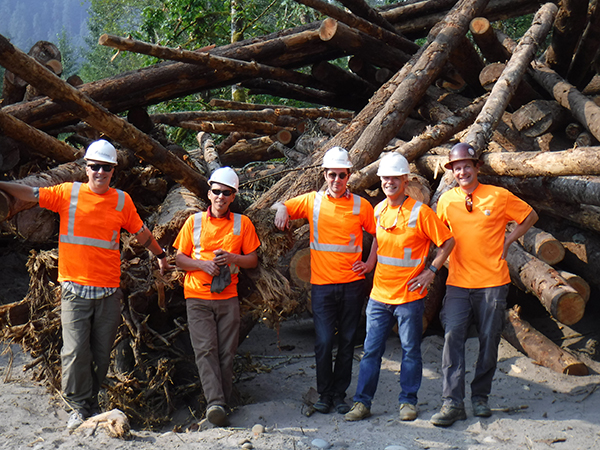
Brown Advisory Invests in Floating Wetlands
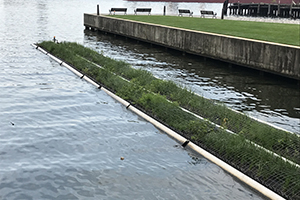 The Bond Street Wharf, which juts out from the north shore of Baltimore Harbor, was built in the 1700s to support shipbuilding. Once a major maritime hub, the wharf is now home to the investment firm Brown Advisory. A key partner in the Waterfront Partnership of Baltimore’s Healthy Harbor Initiative–in effort to make Baltimore Harbor swimmable and fishable by 2020–Brown Advisory was eager to implement pilot projects to enhance waterfront ecology in their own backyard. They saw an opportunity in a vacant canal located alongside the wharf on which their offices sat.
The Bond Street Wharf, which juts out from the north shore of Baltimore Harbor, was built in the 1700s to support shipbuilding. Once a major maritime hub, the wharf is now home to the investment firm Brown Advisory. A key partner in the Waterfront Partnership of Baltimore’s Healthy Harbor Initiative–in effort to make Baltimore Harbor swimmable and fishable by 2020–Brown Advisory was eager to implement pilot projects to enhance waterfront ecology in their own backyard. They saw an opportunity in a vacant canal located alongside the wharf on which their offices sat.
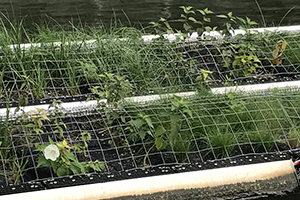 Biohabitats developed a new, durable, modular floating wetland design that would facilitate maintenance and withstand the wind and waves the canal experiences. Last year, Brown Advisory employees planted the constructed floating wetland media fabricated for us by Floating Wetland Solutions. Plants included smooth cordgrass (Spartina alterniflora), saltmeadow cordgrass (Spartina patens), saltgrass (Distichlis spicata), and saltmeadow rush (Juncus gerardii). With the help of our partners, Clearwater Mills, who fabricated the buoyant structure that supports the media, we “launched” the wetlands into the canal in spring of 2017.
Biohabitats developed a new, durable, modular floating wetland design that would facilitate maintenance and withstand the wind and waves the canal experiences. Last year, Brown Advisory employees planted the constructed floating wetland media fabricated for us by Floating Wetland Solutions. Plants included smooth cordgrass (Spartina alterniflora), saltmeadow cordgrass (Spartina patens), saltgrass (Distichlis spicata), and saltmeadow rush (Juncus gerardii). With the help of our partners, Clearwater Mills, who fabricated the buoyant structure that supports the media, we “launched” the wetlands into the canal in spring of 2017.

We soon learned that our primary challenge in getting the wetlands established was actually one of the anticipated benefits of the wetlands: increased wildlife. Though the media is housed in cages, resident geese found the wetland vegetation extremely appealing and began pruning the young plants. Through a couple of iterations of adaptive management, we arrived at an exclusion fencing approach that kept the geese at bay. The arched wire fences that saved the day were constructed with the help of our summer interns. As of today, the plants are growing with vigor. Biohabitats incorporated a designed experiment with the planting plan. The aim is to evaluate what species succeed in the brackish waters of the harbor and whether the species prefer to be grown in clusters of their kind or mixed with other plants. For more information contact Chris Streb.
Helping Hands Improve Headwaters
The headwaters of the Spa Creek watershed flow through Annapolis, MD and ultimately into the Chesapeake Bay. A treasured natural and recreational resource, Spa Creek provides habitat for many species native to the Chesapeake Bay. Decades of development and population growth, however, have caused many of its headwaters to become eroded sluiceways that swiftly carry stormwater sediments and pollutants downstream. Over the last several months, we’ve been working with the Spa Creek Conservancy to restore more than 5,000 linear feet of those upper reaches. The project involved the removal of two acres of invasive common reed (Phragmites australis). Fortunately, students from the Chesapeake Alliance’s Restoring the Environment and Developing Youth (READY) program were there to lend a hand with that phase of the project. The READY program creates green jobs for young adults (16 to 24 years old) while improving watershed health. Contact Joe Berg for more information.
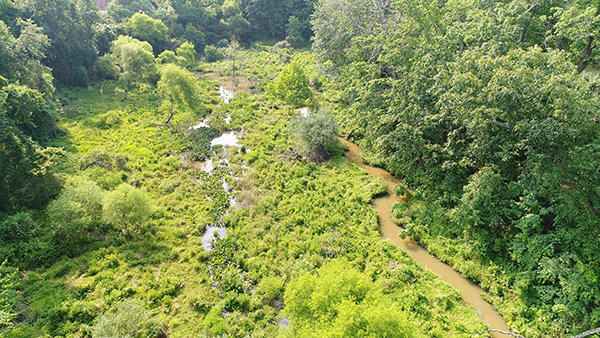
Places
Last weekend, we took to the beautiful waters of Annapolis, Maryland’s Spa Creek to help out with the Spa Creek Conservancy‘s annual PaddleFEST. Jim Cooper kept his cool and his balance as he led tours of two sites along Spa Creek we are working to restore.
Biohabitats is proud to sponsor the Mid-Atlantic Stream Restoration Conference, which has been taking place over the last few days in Baltimore. If you’re still there, be sure to stop by the Biohabitats booth and enjoy a round of hydraulic jump Skee-ball.
From Sept. 26-28, ecological planner/designer Jennifer Dowdell will be in New Orleans to deliver a presentation on “Restoration and Resilience of Coastal Systems in Park Design and Planning” to attendees at the National Recreation and Park Association’s annual conference.
The Villanova Urban Stormwater Partnership is hosting its annual Stormwater Symposium on Oct. 3. If you haven’t already done so, register today. You will not want to miss practice leader Ted Brown present “Green Streets – Tools and Methods for Finding the Opportunities.”
On Oct. 7, we’ll celebrate the Wissahickon Valley Watershed Association’s 60-year legacy of protecting the quality and beauty of Wissahickon by sponsoring and attending the Association’s Creek Green Ribbon Gala. The event will take place at Kinder Hill Farm in Ambler, PA. Hope to see you there!
Oct. 7 is also the night of Hammers & Ales, a fun beer and food-filled fundraiser for the Baltimore Community ToolBank. If you’re planning to go, be sure to check out the Stormwater Factory we designed behind the ToolBank warehouse.
On Oct. 8, Susan Sherrod will attend the EPA Region 8 Wetlands Conference in Boulder, CO.
From Oct. 10-11, a Biohabitats team will be in Atlanta, GA attending the 2017 EcoDistricts Summit. The Summit is a participatory gathering to advance sustainable, equitable, and resilient neighborhood- and district-scale projects. As an organizational sponsor of EcoDistricts, and a team that embraces the EcoDistrict concept, we wouldn’t miss it for the world. If you plan to join us, keep an eye out for Keith Bowers, Jennifer Dowdell, Kevin Nunnery, Jessica Norris, and Pete Muñoz .
Oct. 10-11, our friends Jim Patchett and Tom Price of Conservation Design Forum will deliver a lecture on “How to Build Resilient and Green Infrastructure” at the Upper Mississippi River Conference in Moline, IL.
On Oct. 12, from Noon-1pm, Keith Bowers will be participating in a roundtable discussion at the University of Virginia focused on the restoration of places, politics, and cultural products, and the acrimonious debates that accompany such decisions. Led by faculty coordinator Lisa Goff (American Studies & English; Director, Institute for Public History), the roundtable will illuminate contemporary fault lines in American culture that reveal divisions of national identity, race, class, and politics. The roundtable will be held at OpenGrounds on the UVA Corner.
When it comes to responding to today’s environmental challenges, there is no time for fear. Fortunately, from Oct. 13-15, our friends at the Omega Center for Sustainable Living are presenting “Being Fearless,” a three-day online event featuring speakers like Van Jones, Amy Goodman, Bill Moyers, Opal Tometi, and other courageous voices. With a $5 donation, you can access the full program and gain insight and tools to navigate these complex times. Register today!
 We are proud to sponsor the 10th Annual Blue Water Bash, which will take place on Oct. 14 in Baltimore. The Bash is a great way to celebrate Blue Water Baltimore’s work to restore our waterways and strengthen our communities. Join us for this fun waterfront event!
We are proud to sponsor the 10th Annual Blue Water Bash, which will take place on Oct. 14 in Baltimore. The Bash is a great way to celebrate Blue Water Baltimore’s work to restore our waterways and strengthen our communities. Join us for this fun waterfront event!
Keith Bowers will be the key note speaker at the Atlanta Park Pride’s Roundtable Oct. 19th at the Atlanta Botanical Gardens. Coming on the heels of Atlanta City Design, Keith will talk about how a robust urban ecology framework can serve as a catalyst for a more livable, equitable, and resilient Atlanta. This fall, Biohabitats will embark on an 18-month study to develop an urban ecology framework for the city of Atlanta.
For 28 years, Bioneers has been the leading summit calling for a revolution from the heart of nature. Senior engineer Erin English will join other visionaries at Bioneers 2017 in San Rafael, CA on Oct. 20-22. Erin will present a riveting talk on regenerative development.
This year’s American Society of Landscape Architects Meeting & Expo will take place Oct. 20-23 in Los Angeles, CA. Jennifer Dowdell will moderate a discussion on Designing Innovative Habitats: Urban Infrastructure + Aquatic Habitat. Panelists include Pippa Brashear, Andrew ten Brink, and Sarah Cohen, who will share the work of SCAPE studio, Field Operations, and Sasaki, respectively. Erin will join Dennis Meyer and Bryce Maryman from MIG/Portico/SvR in presenting a talk on conservation water design in the west.
On Oct. 24, the Maryland Chapter of the US Green Building Council will host Engineering Green, and Biohabitats is proud to be a sponsor. If you’re coming, don’t miss Jennifer Dowdell’s talk on Baltimore’s Green Network Plan. Other Biohabitatians attending this event include Ted Brown, Jennifer Missett, and Chris Streb.
At the 2017 EDspaces Conference in Kansas City, MO on Oct. 25, Conservation Design Forum’s Jason Cooper will join panelists from Chicago Public Schools, The Healthy Schools Campaign, and LEGAT Architects to talk about creating healthy learning environments.
Southern Rocky Mountain Bioregion Leader Claudia Browne will be speaking at the Sustaining Colorado Watersheds conference in Avon, CO about “Envisioning Water: Turning Data into Stories” on October 11. She will also be attending the Land Trust Alliance’s 2017 Rally in Denver, CO Oct. 26-28.
What are useful collaborative strategies to bring together ecological science and physical design? On Nov. 1, Biohabitats’ president Keith Bowers and Conservation Design Forum’s Principal Water Resource Engineer, Tom Price, will address this topic at a symposium hosted by the Penn State Collaborative for Ecological Design and Restoration (CDAR), whose mission is “Merging ecology and design to improve the ecological function of the designed world”. The symposium will feature Keith, Tom, and seven other leaders in the fields of natural sciences, social sciences, and design who will speak to the benefit of collaboration between environmental scientists and designers.
The American Water Resource Association’s Annual Conference will take place in Portland, Oregon Nov. 5-9. If you plan to attend, keep an eye out for Joe Berg, Pete Munoz, and Matt Koozer, and be sure to grab a copy of the November issue of AWRA’s magazine, IMPACT. The issue focuses on West Coast Water, and since Biohabitats served as guest editor, you know it won’t be boring! From the meadows of the High Sierras to densely developed city blocks, the water resource protection strategies reviewed in this issue are sure to inform and inspire. In November, the issue will be available on the AWRA web site.
Each year Landscape Forms and the Landscape Architecture Foundation sponsor an event called XTreme LA. The event is a two-day charrette where a select group of the best and brightest young designers (12-15 under 35 years old) team with graduate students and two distinguished design Team Leaders for a problem-solving exercise with concluding presentations. Keith Bowers, along with Chip Crawford of Forum Studio will serve as leaders for this year’s program, St. Louis Blues: Water Woes, to be held at Washington University in St. Louis Nov. 6-8.
The Greenbuild International Conference & Expo will take place in Boston Nov. 8-10. Pete Munoz will join colleagues from the City of Santa Monica, Berkshire Design Group, and the International Living Future Institute in presenting an educational session on Meeting Net Positive Water Through Innovation and Advocacy.
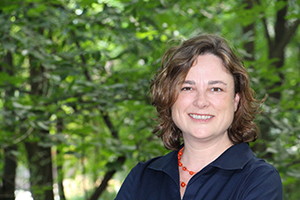
Chesapeake/Delaware Bays Bioregion Leader Jennifer Missett will deliver the keynote address at the 2017 Stormwater Solutions Conference & Expo in Tinley Park, IL on November 9.
The Maryland Water Monitoring Council’s Annual Conference will take place on Dec. 8 in Linthicum, MD. We’re proud to support and participate in this event. If you plan to be there, be sure to visit our booth and say hello!
Terry Doss will present Restored and Created Wetlands for Coastal Climate Resilience at the American Geophysical Union’s Fall Meeting, which will take place Dec. 11-15 in New Orleans, LA.
People
Meet our newest team member: Carson Smith, Water Resources Engineer
Favorite type of project: I enjoy building large wood habitat structures in rivers. Such projects tend to be more complex and involve creativity in both design and construction.
Best Biohabitats moment so far: It’s not a single moment, but I really enjoyed working on the River Island construction. The project started out challenging and grueling, but by the end everything was going smoothly and everyone involved with the project was happy.
Hobbies: Board and card games, bowling, tennis, hiking, and camping.
Childhood ambition: I always wanted to be a scientist. I started studying biology in college before quickly switching to ecological engineering.
Favorite ecosystem: River systems, particularly mountain streams and the surrounding forests.
Restore America’s Estuaries with Hudson River Bioregion Leader, Terry Doss
Hudson River Bioregion Leader Terry Doss will be serving on the Program Committee for the 9th National Summit on Coastal and Estuarine Restoration and Management in Long Beach, California, which will take place December 8-13, 2018. The theme is: Investing in our Coast, Environment and Future. Have any ideas for Summit programming? Contact Terry!
Farewell to our Summer Interns!
This summer, we hosted two summer interns from Baltimore’s Green Street Academy: rising seniors Marcel Carter and Cameryn Jarrett-Lane. Marcel and Cameryn helped out with a stormwater management project on their campus , built and installed goose exclusion fencing for floating wetlands, helped Charleston Audubon intern, Denzel Wright teach a nature course for children at the Patterson Park Audubon Center’s summer camp, and more. Here, they share a bit about what they learned.
Golden Acorn Winner
Every quarter, Biohabitats awards one staff member with something we call the Golden Acorn. The award recognizes employees who, through their actions, embody the Biohabitats mission to “Restore the Earth and Inspire Ecological Stewardship.” The gold color symbolizes purity of purpose in protecting and defending nature, and the acorn symbolizes strength of resolve. Nominees are submitted by the staff. Our most recent Golden Acorn winner was Great Lakes Bioregion leader Tom Denbow. Recipients of the Golden Acorn get to direct a monetary donation to the non-profit organization of their choice. Tom directed his donation to the Alliance for the Great Lakes and We Run This City, a youth resiliency program run by the YMCA of Greater Cleveland, Cleveland Metropolitan School District, the Rite Aid Cleveland Marathon, and Case Western Reserve University Prevention Research Center for Healthy Neighborhoods.
